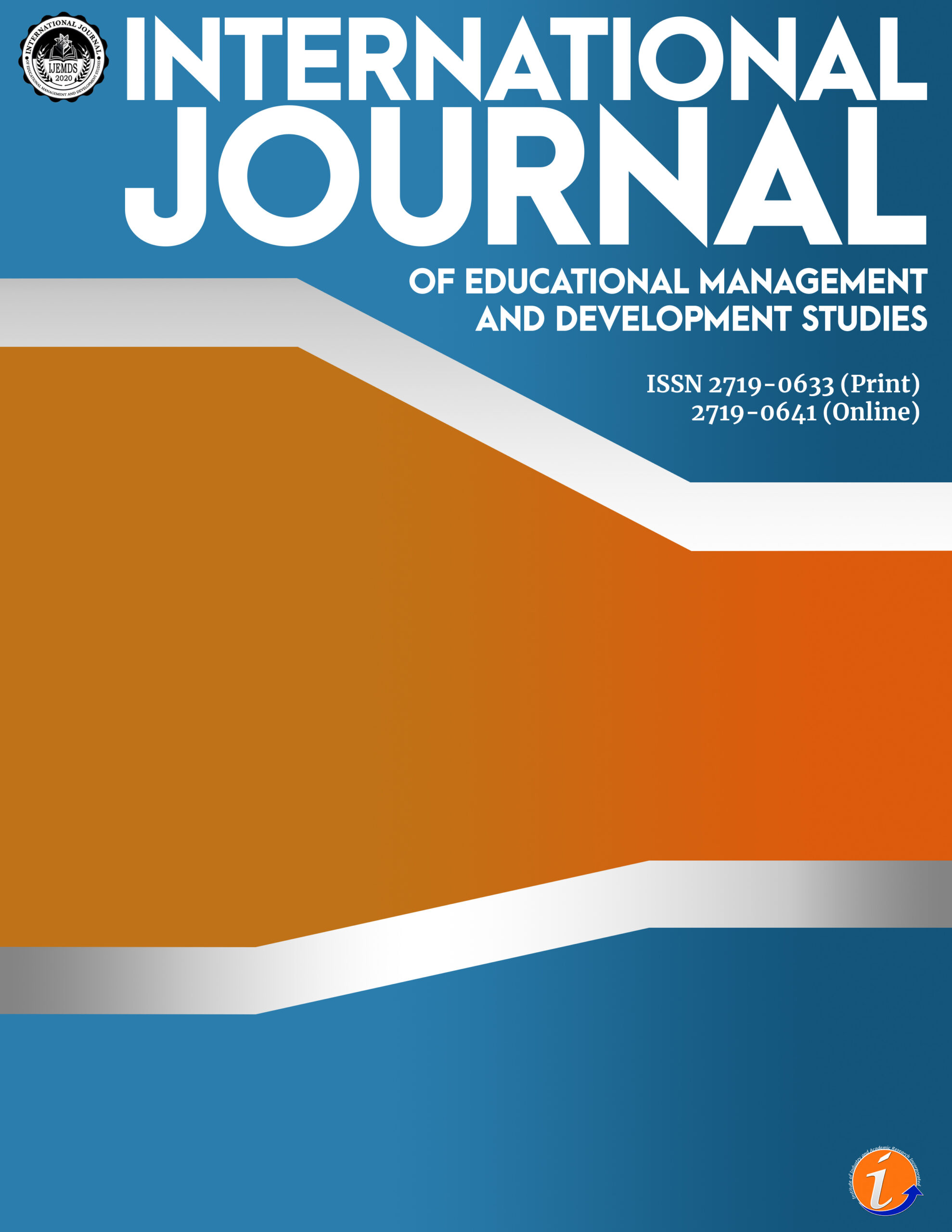Planning is an integral part of the teaching process where learning expectations are identified, and resources and activities are selected and organized step-by-step to help students meet learning goals. In this context, this study aimed to determine the relationship between the instructional preparations and the level of learning skills of the 21st century students. The respondents were 140 students enrolled in grade ten level under online and blended distance modality during the school year 2021-2022. Descriptive design was utilized in the study with the aid of mean, standard deviation, and Pearson product-moment correlation coefficient as statistical tools. The findings revealed that teaching strategies was the most effective among the three instructional preparations. Meanwhile, on the 21st century learning skills, students were very good in learning and innovation, critical thinking, and information, media, and technology. However, the students are somewhat lacking on problem solving. The findings also revealed no relationship between the instructional preparations and the level of learning skills. This study suggests educational institutions to provide professional development programs and seminars on instructional preparations that can be invaluable in improving and enhancing different teaching methodologies adhering to the 21st century learning.
instructional preparations, learning skills, 21st century students
Zyrah G. Basalo. Corresponding author. Teacher I in Gulod National High School- Mamatid Extnsion, Cabuyao City, Laguna, Learning Resource Coordinator
Nelia T. Salvador. Research Advisor, Laguna State Polytechnic University- San Pablo City Campus
Aguilera-Hermida, A. P. (2020). College Students’ Use and Acceptance of Emergency Online Learning Due To Covid-19. International Journal of Educational Research Open, 1, 100011.
Airasian, P. W., & Russell, M. (2011). Classroom Assessment (7th ed.). McGraw-Hill Education.
Akan, D., & Basar, M. (2013). The effect of the classroom activities on classroom management in the teaching- learning process: The case of Uşak City. Mevlana International Journal of Education, 3(4), 147–165. https://doi.org/10.13054/mije.13.63.3.4
Al-Banna, J. B., & Aziz, M. S. A. (2015). Teaching Strategies. Research Gate. https://www.researchgate.net/
Al-Khasawneh, R. O. (2019). The Role and Importance of Information Technology In Reducing the Risks of Information Technology Security in Government Units in The Light of Applying e-government governance. Information and Knowledge Management, 8(9).
Anastasiadou, A. (2013). Self-assessment: Its Impact on Students’ Ability to Monitor their Learning Process in the English Classroom and Develop Compensatory Strategies. Research Papers in Language Teaching & Learning, 4(2).
Bukoye, R. O. (2019). Utilization of Instruction Materials as Tools for Effective Academic Performance of Students: Implications for Counselling. Proceedings, 2, 1395. 10.3390/proceedings2211395
Callo, E. C., & Yazon, A. D. (2020). Exploring The Factors Influencing the Readiness of Faculty and Students on Online Teaching and Learning as an Alternative Delivery Mode for the New Normal. Universal Journal of Educational Research, 8(8), 3509-3518.
Coşkun, S., & Eker, C. (2018). The Effect of Teaching Activities Done by Using Activity Based Posters on the Students’ Academic Achievements, Retention Levels in Their Learning. Universal Journal of Educational Research, 6(4), 585–597. https://doi.org/10.13189/ujer.2018.060402
Ecole Globale. (2021). Importance of Preparation and Planning for Teachers. Ecole Globale International Girls’ School. https://www.ecoleglobale.com/blog/importance-of-preparation-and-planning-for-teachers/
Erdem, C. (2019). Introduction to 21st Century Skills and Education. Cambridge Scholars Publishing.
Fisher, M. R., & Brandy, J. (2019). Assessing Student Learning. Center for Teaching Vanderbilt University. Vanderbilt Center for Teaching.
Gurajena, C., Mbunge, E., & Fashoto, S. (2021). Teaching and Learning in the New Normal: Opportunities and Challenges of Distance Learning Amid COVID-19 Pandemic. Available at 10.2139/ssrn.3765509.
Iyer, L. (2019). Critical Thinking and its Importance in Education. Proceedings of the Cognitive, Psychological and Behavioural Perspectives in Education.
Jenlink, P. M. (2020). Teacher Preparation and Practice: Reconsideration of Assessment for Learning. Rowman & Littlefield. ISBN 1475856911
Kapur, R. (2020). Problem Solving Skills: Essential Skills in Providing Solutions to Personal and Professional Problems.
Karag, I., & Bekmezei, S. (2015). Investigating Academic Achievements and Critical Thinking Dispositions of Teacher Candidates. Journal of Education and Training Studies, 3(4). 10.11114/jets.v3i4.834
Kivunja, C. (2015, January 23). Unpacking the Information, Media, and Technology Skills Domain of the New Learning Paradigm. International Journal of Higher Education, 4(1). 10.5430/ijhe.v4n1p166
LSU Online. (2020, May 8). How Instructional Technology Can Improve the Learning Process. Newsroom. https://online.lsu.edu/newsroom/articles/how-instructional-technology-can-improve-learning-process/
Mallillin, L. L. (2021). Strategies, Trends, Methods and Techniques of Teaching in the New Normal Learning Perspective of Students. East African Scholars Journal of Education, Humanities and Literature, 4(7). 10.36349/easjehl.2021.v04i07.001
McGuire, C. (2018, May). Transforming Traditional Teaching Practices with 21st Century Skills in K-12 Classrooms. St. Cloud State Repository. https://repository.stcloudstate.edu/
Meador, D. (2019). Strategies for Teachers: Preparation and Planning. ThoughtCo. https://www.thoughtco.com/power-of-preparation-and-planning-3194263
Minchin, T. (2014). Bruner’s Theory of Instruction. New Learning Online. https://newlearningonline.com/new-learning/chapter-8/bruners-theory-of-instruction
Nasrullah, S., Khan, M. S., & Kamal, S. (2017). Effect of Claaroom Activities in Teaching Learning Process at Primary Level. Science International, 29(3), 691-695. http://www.sci-int.com/pdf/636430587612078336.pdf
Sharna, K. (2019, November 13). Best Learning Activities For Students in School. The Asian School. https://www.theasianschool.net/blog/learning-activities-for-students/
Stehle, S.M., Peters-Burton, E.E. Developing student 21st Century skills in selected exemplary inclusive STEM high schools. IJ STEM Ed 6, 39 (2019). https://doi.org/10.1186/s40594-019-0192-1
Tanjung, B. J., Saragih, A., & Pulungan, A. H. (2021). The Effect of Teaching Strategies and Students’ Interest in Reading Comprehension. Advances in Social Science, Education and Humanities Research. https://doi.org/10.2991/assehr.k.211110.139
Tularam, G. A. (2018, August 27). Traditional vs Non-traditional Teaching and Learning Strategies – the case of E-learning! International Journal for Mathematics Teaching and Learning, 19(1).
Victoria State Government. (2022, February 9). High impact teaching strategies (HITS). Department of Education and Training Victoria. https://www.education.vic.gov.au/
Williams, P. J., & Mangan, J. (2016). The effectiveness of using young professionals to influence STEM career choices of secondary school students. Journal of Research in STEM Education, 2(1), 2–18.
Cite this article:
Basalo, Z.G. & Salvador, N.T. (2022). Instructional preparations and the learning skills of the 21st century students. International Journal of Educational Management and Development Studies, 3(3), 62-78. https://doi.org/10.53378/352908
License:
![]()
This work is licensed under a Creative Commons Attribution (CC BY 4.0) International License.










